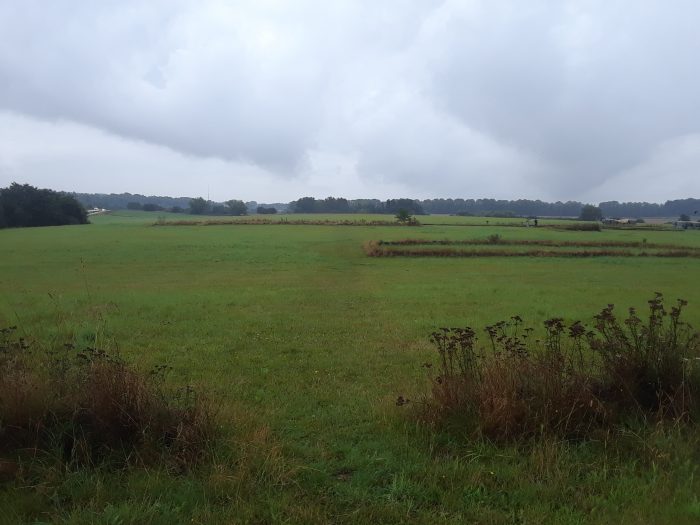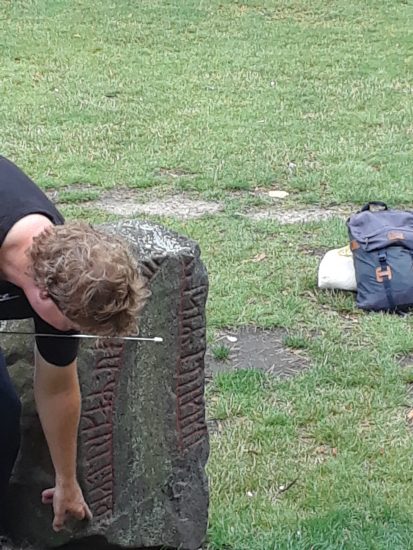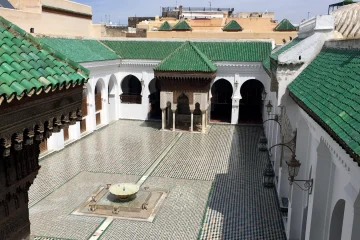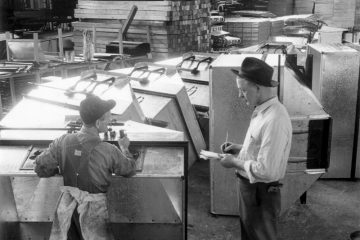A Special Librarian Abroad: Denmark and Sweden
This past August, I had the amazing opportunity to travel to Denmark to study medieval Scandinavian manuscripts, and take in Danish history and culture for about two weeks through a summer school program offered at the Arnamagnæan Institute and University of Copenhagen. This was perhaps the best trip and specialized educational experience of my life for many different reasons. The most obvious reasons being, getting the chance to go to Denmark, and having the opportunity to learn about, and get hands-on experience working with medieval Scandinavian manuscripts at a really cool special library like the Arnamagnæan.
While in Denmark, majority of my time was spent in classes held at the Arnamagnæan, and a few other buildings on the Southern Campus of the University of Copenhagen in the part of the city called Amager. Each course day consisted typically of two lectures and two workshops on different topics related to the field. The first week’s set of topics primarily coalesced around scholarly editing and philology as related to Scandinavian medieval manuscripts, such as sections on: types of scholarly editions; material philology; locating texts; variant manuscript readings; using XML to transcribe manuscripts; and stemma building. My two favorite sections of the first week were the ones on material philology and locating texts. I liked the section on material philology, because it dealt with the physical materiality of manuscripts, and exercises where we gathered data related to that concept, such as leaf size, number of lines per leaf, and number of words per line to then calculate text density. I liked the locating texts section, because we got to use some really cool catalogs and bibliographies.
In between the first and second week of classes I had one day off, and a mandatory excursion to Lund, Sweden. I spent my day off going on a casual excursion with several of my friends from the class to the Viking Ship Museum in Roskilde, and an archaeology museum and Viking hall ruins in Lejre. Roskilde is a beautiful small medieval village, with an amazing cathedral, and a fascinating museum. The Viking Ship Museum is an incredible example of a highly focused museum, which is part living museum, and part lens through which to observe a remarkable example of successful experimental archaeology. Housed in the Viking Ship Hall part of the museum, are the surviving planks that came from five Viking Age ships, which are placed in iron skeletons of what the ships would’ve looked like.

Seeing the ships was a very humbling experience, but not quite as humbling as walking among ruins of viking halls in Lejre. The Viking hall ruins of Lejre are truly a beautiful sight. These ruins are immensely important to both Viking Age history and medieval literature, considering that Lejre is mentioned as the location of the Skylding dynasty in Beowulf, along with Saxo Grammaticus’ The History of the Danes . The archaeology museum in Lejre is also really fascinating, because it houses the recent famous find of a Viking Age miniature silver figurine of Odin, which was found by a local Danish amateur archaeologist using a metal detector.

The excursion to Lund was also quite nice, and included a visit to the University of Lund’s beautiful library, two different medieval cathedrals and crypts, and a fascinating tour of the large runestones in Lund by expert runologist, Michael Lerche Nelson. It surprised me quite a bit that the rather hilarious, and super smart runologist turned out to be one of the best networking connections I made during my entire stay in Copenhagen. He’s been working on doing research on an 18th C. woman artist from Boston, where I’m based. I am hoping to assist him, if possible, and maybe even meet up if he ever comes to Massachusetts.

I got to look at and work with many fascinating manuscripts during this trip. And during the second week, I even got to assist with cataloging a manuscript using XML in a group. The catalog record we created was actually edited and published on the Arni-Magnusson Institute in Iceland’s online catalog, Handrit.is. The manuscript my group researched and cataloged just happened to be the most unique and interesting manuscript out of all the ones the class worked on. The manuscript we cataloged, AM 451 12mo, is a small Danish law manuscript from the 15th century. Law manuscripts don’t exactly sound like the coolest manuscript in the room, but what makes this manuscript so amazing is that it has a date inscribed in it along with the actual scribe’s name at the end of the book. Also, there is provenance information preserved on the manuscript’s binding. Those three pieces of data are almost never preserved in Scandinavian medieval manuscripts, especially the name of the scribe, so this manuscript is really quite spectacular. The manuscript also had beautiful ornamental initials, and a section in the law book text about witches and magic, which is not always preserved in manuscripts of that particular law text. Although, I wasn’t exactly much help with cataloging the manuscript in Danish, my proficiency in English, and experience with traditional descriptive bibliography and rare books, turned out to be quite useful for cataloging the manuscript in English. This was especially true when it came to describing some of the physical and technical aspects of the manuscript.
Lastly, I’d like to mention that in terms of the course, one of the neatest and most unexpected moments, was when we learned that the Norwegian actor, Kristofer Hivju, from Game of Thrones was coming to the Arnamagnæan Institute to film a segment for a documentary on the Viking Age historical figure of King Olav Haraldsson. So during the locating manuscripts workshop, we had a great group exercise, where we had to try to determine which manuscript would be best to show during the filming of the documentary segment. This proved to be quite challenging because the original manuscript of Heimskringla, which features Olav, was destroyed in a fire in 1728. Luckily one of Arni Magnusson’s scribes copied the original, but there’s always the question and issue of authority when it comes to copies of medieval texts.
This was a fantastic experience, and I highly recommend that librarians and non-librarians alike interested in the field of Scandinavian medieval manuscripts, or taking a course at one of the coolest special libraries in the world consider applying to the summer school program.
Relevant Links:
Arnamagnæan Institute in Copenhagen



0 Comments